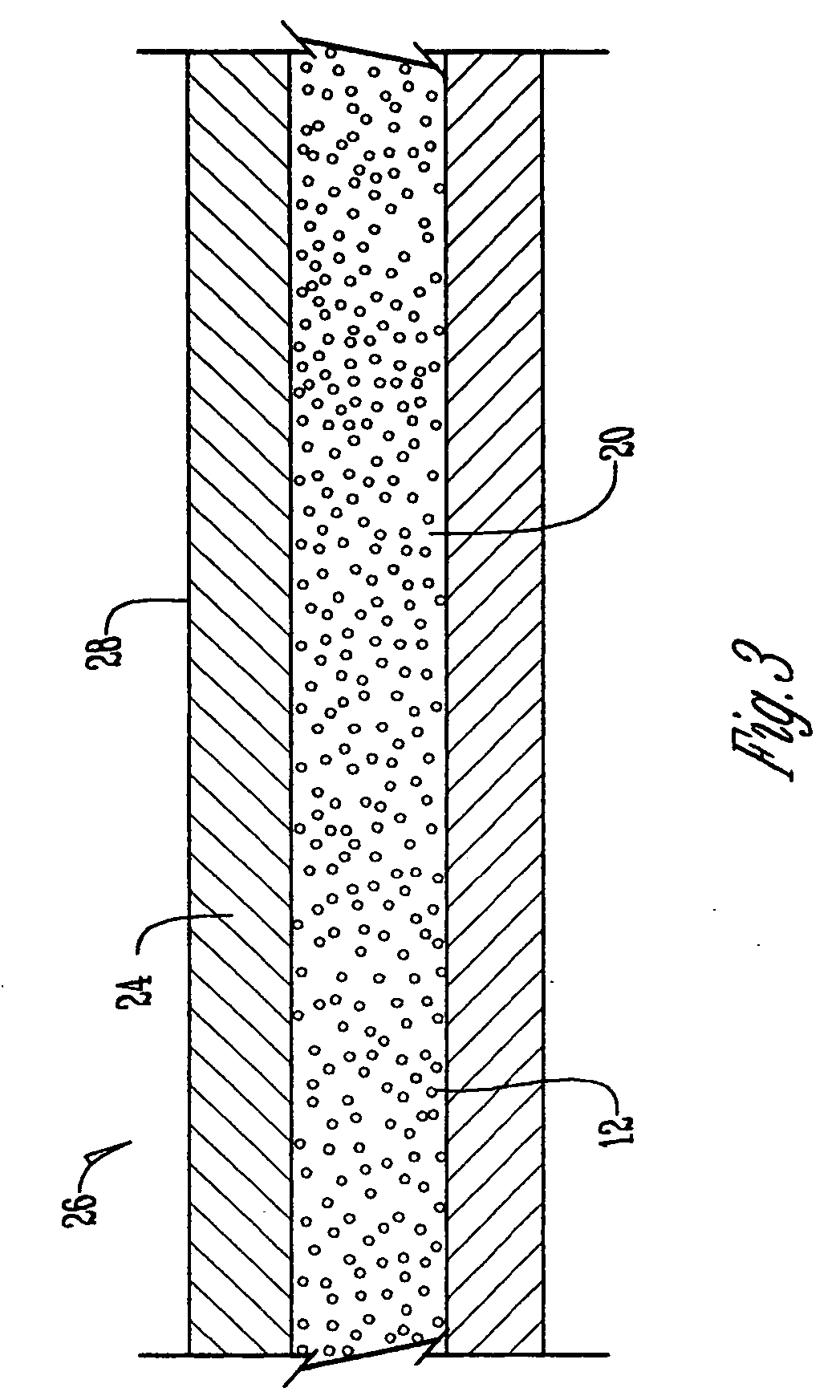Method of recycling a nuclear-cored battery
- Summary
- Abstract
- Description
- Claims
- Application Information
AI Technical Summary
Benefits of technology
Problems solved by technology
Method used
Image
Examples
Embodiment Construction
[0029]FIG. 1 shows an atomic battery or nuclear-cored battery 10. Nuclear-cored battery 10 is created by producing a plurality of energy sources in the form of spheres 12 (FIG. 2) that each have a nuclear core 14 that emits alpha, beta, or gamma radiation. Nuclear core 14 is comprised of any radioactive material including, uranium, uranium carbonate, uranium oxide, strontium, and strontium oxide.
[0030] The nuclear core 14 is surrounded by a ceramic phosphor material 16 that is in one embodiment a crystalline having a carbon defect such that the ceramic phosphor material 16 in combination with the nuclear core forms a light dissipating material 17. In one embodiment, the ceramic phosphor material comprises a high temperature ceramic. In another embodiment this high temperature ceramic comprises a matrix having Al2O3:C. In yet another embodiment zinc sulfide, or another high temperature ceramic having a carbon defect is used. The ceramic material within the ceramic phosphor material ...
PUM
 Login to View More
Login to View More Abstract
Description
Claims
Application Information
 Login to View More
Login to View More - R&D
- Intellectual Property
- Life Sciences
- Materials
- Tech Scout
- Unparalleled Data Quality
- Higher Quality Content
- 60% Fewer Hallucinations
Browse by: Latest US Patents, China's latest patents, Technical Efficacy Thesaurus, Application Domain, Technology Topic, Popular Technical Reports.
© 2025 PatSnap. All rights reserved.Legal|Privacy policy|Modern Slavery Act Transparency Statement|Sitemap|About US| Contact US: help@patsnap.com



